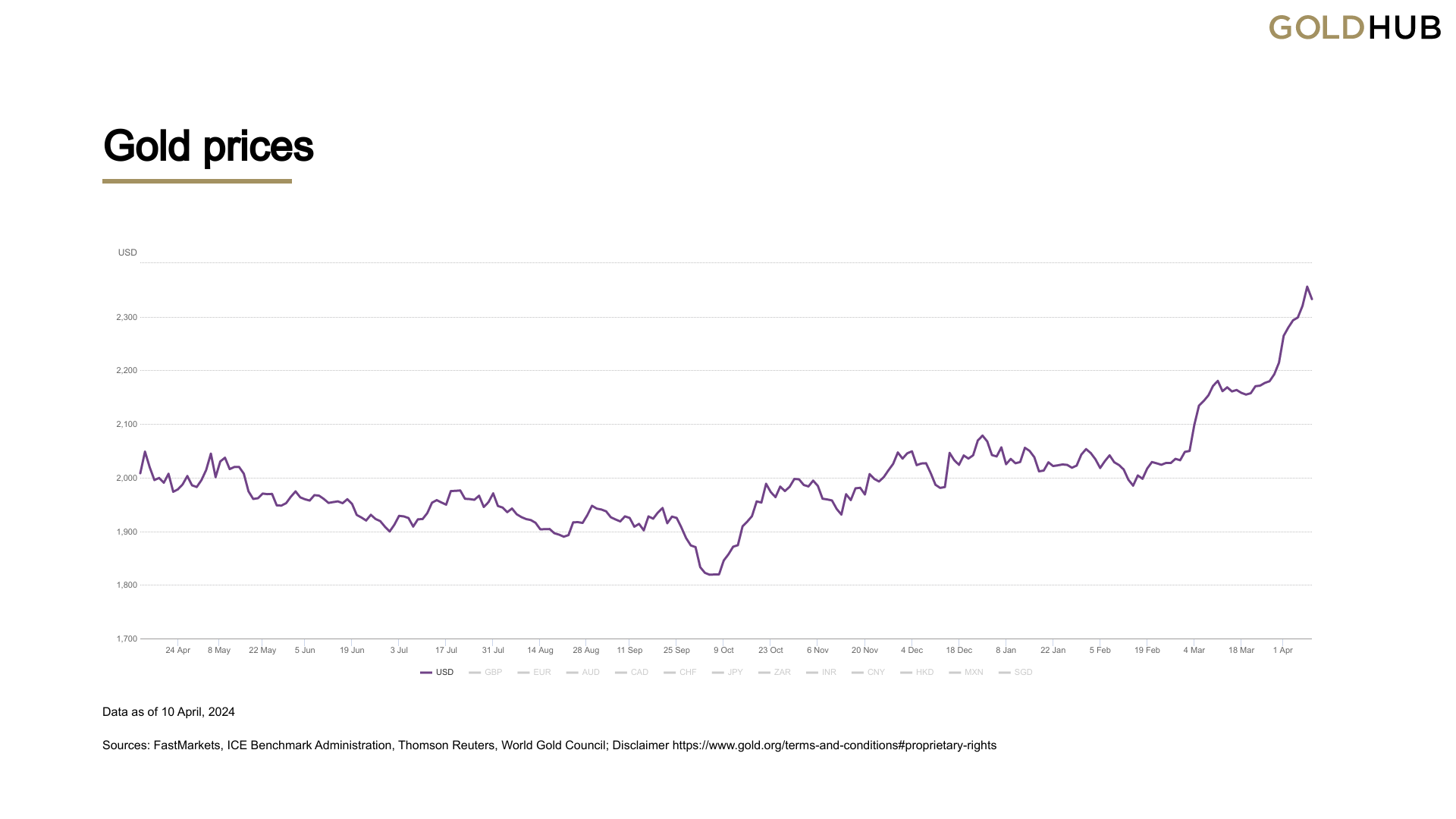Gold prices climbed on Thursday, recouping losses from the previous session.
Spot gold was up 0.6 per cent at $2,345.56 per ounce, in early trade on Thursday. Bullion hit a record high for an eighth consecutive session until Tuesday. US gold futures also gained 0.6 per cent to $2,362.80.
The Influence of Inflation on Gold Prices
“Higher-than-expected consumer prices for the third straight month this year continues to test the Fed’s inflation tolerance,” said IG market strategist Yeap Jun Rong.
Data overnight showed US inflation in March once again came in hotter than expected, decimating the chance of a rate cut in June. Core CPI advanced 0.4 per cent, above forecasts of a 0.3 per cent rise.
Additional Insight: Inflation has a direct impact on the movement of gold prices, as investors often turn to gold as a hedge against inflationary pressures.
Market Sentiment and Demand Factors
“Markets are now adjusting to the high-for-longer rate scenario, which translates to some near-term profit-taking in gold prices overnight,” Jun Rong said, adding that the downside seems limited into the session as market participants still perceive gold as a good hedge against geopolitical tensions.
Strong central bank buying, safe-haven inflows amid continued geopolitical risks, and demand from momentum-following funds have fueled bullion’s 14 per cent gain so far this year.
Additional Insight: Market sentiment and demand factors play a crucial role in determining the trajectory of gold prices, with geopolitical uncertainties and central bank actions influencing investor behavior.
Implications of Federal Reserve Policy
Fed officials worried last month that progress on inflation might have stalled, making a longer period of tight monetary policy necessary, according to the minutes of the US central bank’s March 19-20 meeting.
Along with the recent hot inflation data, a strong US jobs report last week that blew past forecasts also stirred more questions on the feasibility of rate cuts this year.
Higher interest rates reduce the appeal of holding non-yielding gold .

Additional Insight: In addition to inflation and central bank policies, the overall economic conditions, currency movements, and investor sentiment also play critical roles in determining the direction of gold prices in the market. Investors often turn to gold as a safe haven asset during times of uncertainty and as a hedge against economic instability, further driving demand and influencing price movements.









